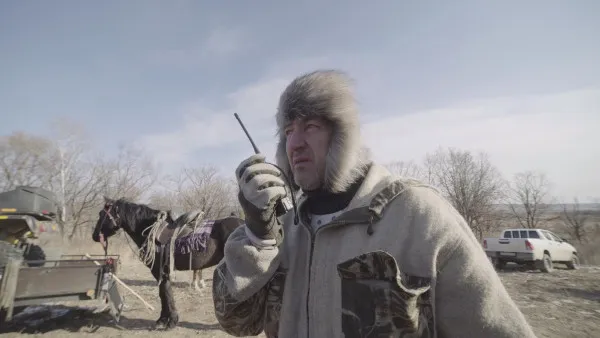Eye For Film >> Movies >> Tigerland (2019) Film Review
Tigerland
Reviewed by: Jennie Kermode

Few people would dispute that tigers are beautiful animals but when it comes to conservation, that's not enough. There's a reason why animal advocates prefer the cuddly-looking, mild mannered giant panda. Selling people on the importance of protecting an animal that grows up to three and half metres in length and would as happily bite your arm off as say hello isn't easy. Opponents of tiger conservation methods - those who have enjoyed hunting them or who profit from selling their body parts as 'medicine' - argue that conservationists are making a sentimental case that ignores the very real danger these animals present to those who live alongside them. Yet it is precisely in these communities that the most determined efforts to help tigers are to be found.
Ross Kauffman's documentary introduces viewers to tiger conservation efforts in India and Siberia, moving back and forth between the two so that viewers can find points of comparison and contrast. In both areas there is great respect for these lords of the forest and we get to hear the thoughts of local people as well as the conservationists themselves. Pavel Fomenko has worked with tigers all his life and remains dedicated to them even after an encounter that could have cost him his life. Amit Sankhala and Jai Bhati have inherited their tiger-watching duty from an older relative, the esteemed expert Kailash Sankhala, and spent their whole lives around them. Their passion is further fuelled by an abundance of myth celebrating tigers as creatures of great spiritual power. In Siberia the approach is less romantic but equally enthusiastic.
This is no dry documentary in which men sit around swapping stories of their exploits. There is an extensive amount of tiger footage captured in different contexts and different habitats, helping us to understand more about the day to day lives of these animals. We also see tigers who have been tranquilised for medical reasons, giving us the chance to look at them up close and, when they're just drowsy, watch them wriggling around like happy kittens. There is, however, none of the sentimentality here that we saw in The Cove, with which it shares a producer. We are never allowed to lose sight of the fact that, whilst a little tiger may regard humans as playmates, a big one will regard them as a delicious meaty snacks.
The meditation on India's past relationship with tigers and what happened under colonial rule rounds out that part of the film, with Sankhala's journals adding a personal character to the story that will leave you wanting to know more. The Siberian segment provides two amazing anecdotes, including one about a teenage boy who found a tiger in his backyard (and can prove it). Mixed in with all this are facts and statistics about the decline of tiger populations and how some species have already gone extinct. There are also warnings about the important role that tigers play in the ecosystem, hinting at he knock-on effects of losing them, but it would be nice to have more detail where this is concerned.
Though Kauffman is not always successful in balancing his two primary stories, this is still an interesting film which delivers a good balance of information, anecdote and observation. For tiger lovers, it's a must.
Reviewed on: 23 Mar 2019
















